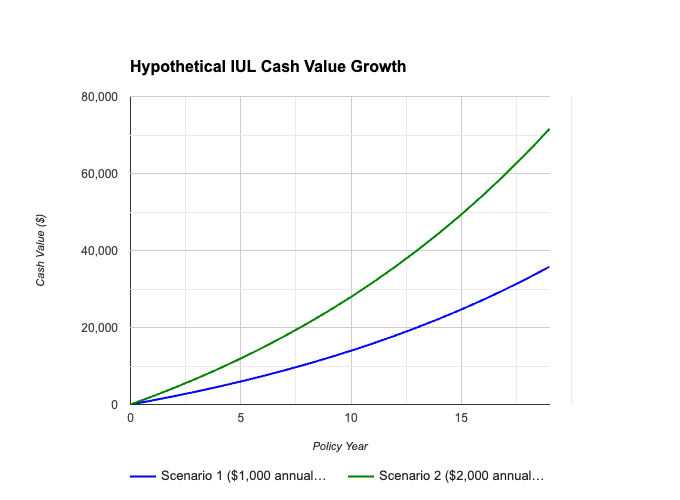Last Updated: February 11th, 2025
Key Man Life Insurance To Protect Your Business
In today’s dynamic business environment, companies often rely heavily on a select group of individuals – their “key men” – to drive success. These individuals, regardless of gender, possess unique skills, knowledge, or relationships that are crucial to the organization’s operations and growth. However, the unexpected loss of a key employee can have devastating consequences, including financial losses, operational disruptions, and even business failure.
What is Key Man Life Insurance?
Key Man Life Insurance is a specialized type of life insurance that businesses purchase on the lives of their most valuable employees. Unlike traditional life insurance, where the beneficiary is a family member, the business itself is the policy beneficiary.
Key Features & Benefits:
- Financial Protection: Provides a lump-sum death benefit to cover expenses like recruitment, training, and temporary salary replacements for the departed employee.
- Business Continuity: Helps maintain operations and cash flow during a critical transition period.
- Enhanced Stability: Reduces financial risk and improves the overall stability of the business.
- Tax Advantages: In some cases, premiums for Key Man Life Insurance may be tax-deductible as a business expense (consult with a tax advisor for specific guidance).
- Employee Recognition: Demonstrates the company’s value and appreciation for its key employees.
Why Your Business Needs Key Man Life Insurance:
- Mitigates Risk: Protects against the financial impact of losing a key employee due to unforeseen circumstances.
- Preserves Value: Helps maintain the company’s value and ensures its long-term success.
- Provides Peace of Mind: Offers business owners and executives peace of mind knowing their company is protected against unexpected losses.
Maximizing the Value of Key Man Life Insurance
- Identify Critical Employees: Carefully assess which employees are truly essential to the company’s success. Consider factors like:
- – Unique skills and expertise
- – Client relationships
- – Leadership roles
- – Contribution to revenue and profitability
- Determine Appropriate Coverage Amounts: Calculate the potential financial impact of losing each key employee and ensure adequate coverage is in place.
- Regularly Review and Adjust: Regularly review the policy to ensure it aligns with the company’s current needs and the changing roles of key employees.
- Communicate with Key Employees: Clearly communicate the benefits of the policy to key employees, demonstrating the company’s commitment to their well-being and the long-term success of the business.
For example: consider a small, family-owned manufacturing company that relied heavily on its head engineer, whose technical expertise was pivotal to its operations. When the engineer passed away unexpectedly, the company faced the dual challenge of finding a replacement and maintaining production schedules. Thanks to their Key Man Life Insurance policy, the company received a lump sum payout, which they used to:
-
Recruit a new engineer with similar expertise.
-
Cover the costs of onboarding and training.
-
Offset revenue losses during the transition.
This financial cushion allowed the business to stay afloat and eventually thrive, despite the significant loss.
Why It’s More Than Just Financial Protection
As Kody Fairfield, Policy Engineer Advanced Markets Division, puts it, “Key Man Insurance is not just about managing risk; it’s about the peace of mind that comes with knowing your business can weather any storm.” By investing in this type of policy, companies not only safeguard their operations but also show their commitment to securing a stable future for all stakeholders.
In today’s competitive and often unpredictable business landscape, protecting your most valuable assets — your key employees — is essential. Key Man Life Insurance is more than a safety net; it’s a strategic tool that ensures your business can overcome challenges and emerge stronger. By understanding its importance, leveraging its benefits, and implementing thoughtful strategies, businesses can safeguard their long-term success and stability.
Frequently Asked Questions
What types of businesses need Key Man Life Insurance?
Any business that relies on specific individuals for its operations, revenue generation, or client relationships can benefit from Key Man Life Insurance. This includes small businesses, startups, and even large corporations.
How is the coverage amount determined?
The coverage amount is typically based on the key employee’s role, their contribution to the company’s revenue, and the costs associated with replacing them. A financial advisor can help assess the appropriate coverage level.
Who pays the premiums for Key Man Life Insurance?
The business is responsible for paying the policy premiums, as it is both the owner and the beneficiary of the policy.
Are the premiums for Key Man Life Insurance tax-deductible?
In some cases, premiums may be tax-deductible if the policy is used for business purposes. However, it’s essential to consult a tax advisor for specific guidance.
Can a key employee refuse to participate?
Yes, a key employee must consent to being insured under a Key Man Life Insurance policy. Employers should communicate openly about the policy’s purpose and benefits to gain their agreement.
What happens to the policy if the key employee leaves the company?
If the employee leaves, the business may choose to cancel the policy, transfer it to the employee, or assign it to a new key employee.
Is Key Man Life Insurance the same as Buy-Sell Agreement Insurance?
No, they serve different purposes. Key Man Life Insurance protects the business from financial loss due to the loss of a key employee, while Buy-Sell Agreement Insurance funds the transfer of ownership in the event of an owner’s death or departure.
How long does it take to secure a Key Man Life Insurance policy?
The process can take several weeks, as it involves underwriting, medical exams (if required), and policy approvals. Starting the process early is recommended.
Disclaimer: This blog is for educational purposes only and does not constitute financial advice. You should consult with a qualified financial professional before making any decisions regarding financial products to determine what is appropriate for your specific situation.




